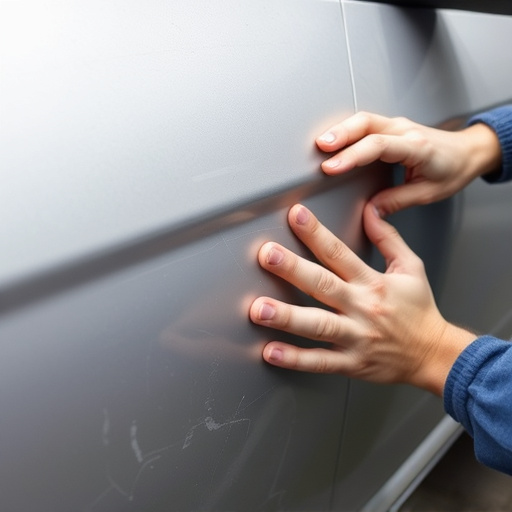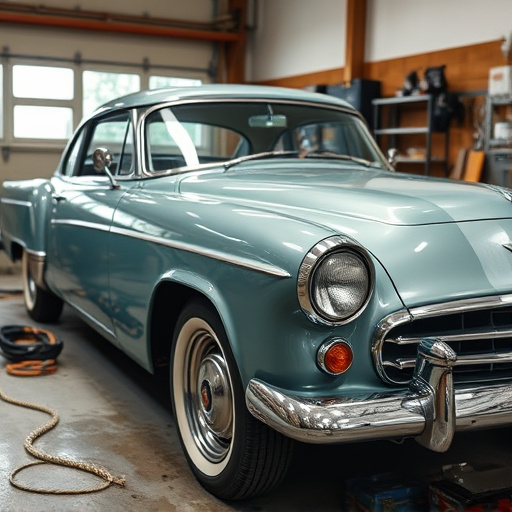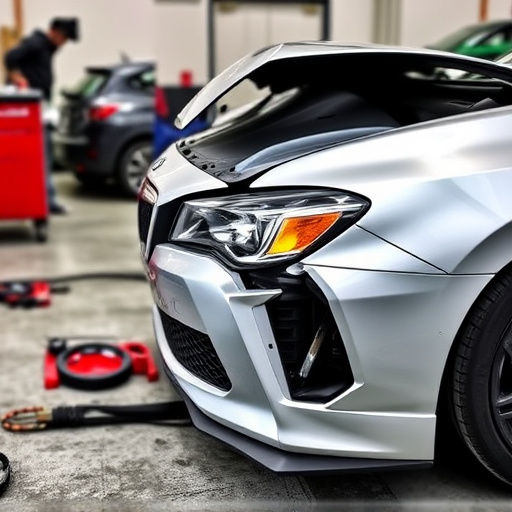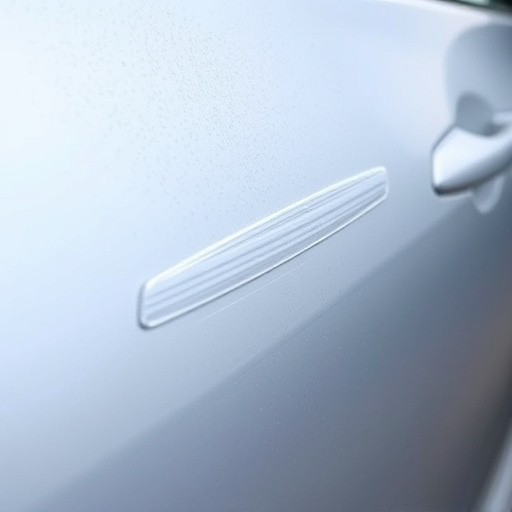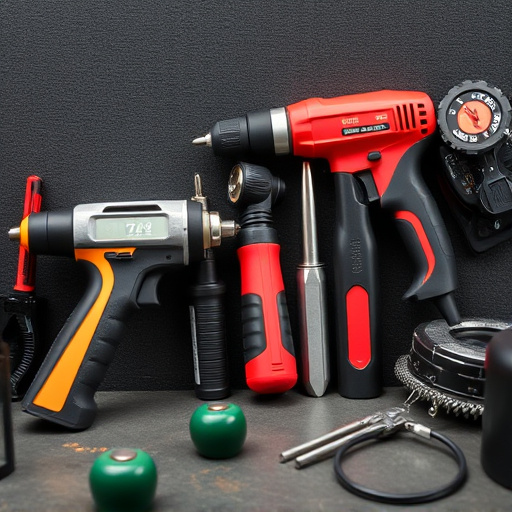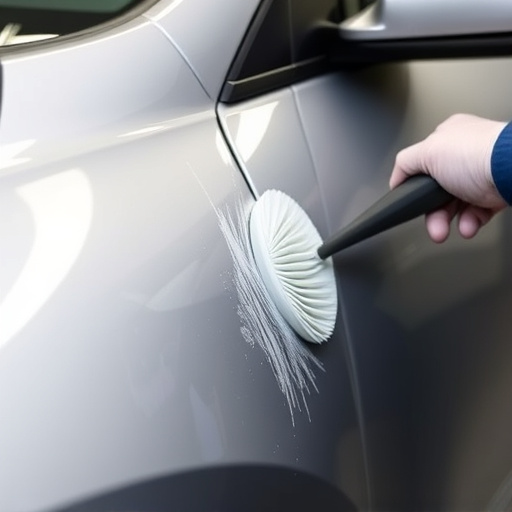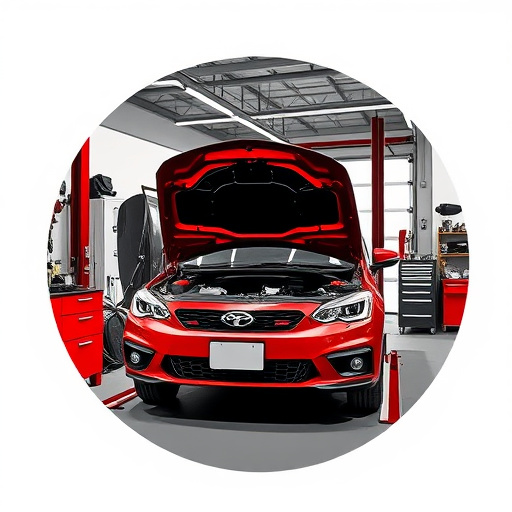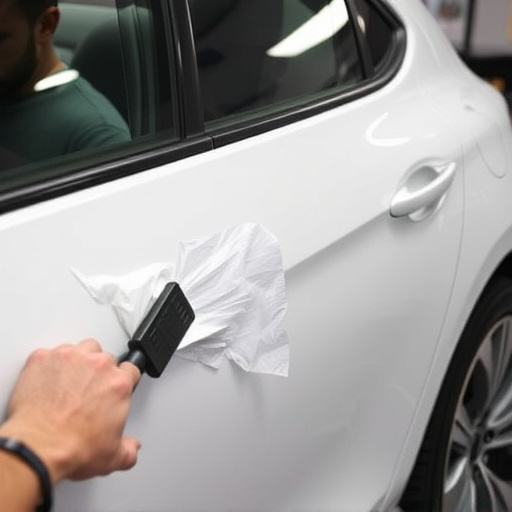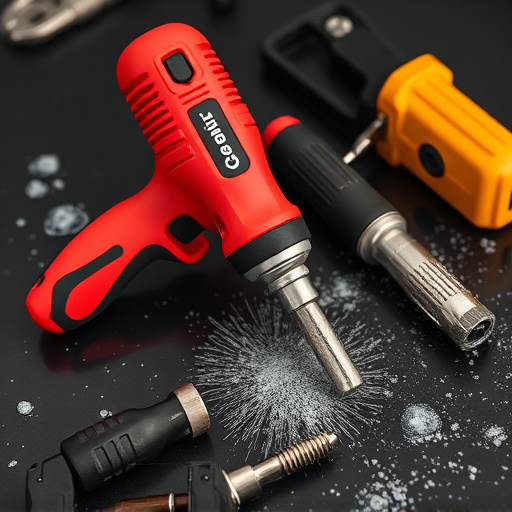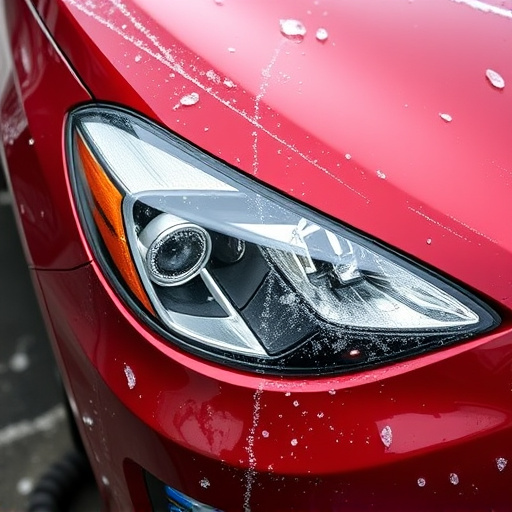Color sanding and buffing are vital for achieving a flawless vehicle paint finish. This meticulous process involves using progressively finer grits of sandpaper to remove imperfections, followed by buffing machines with fine-grit pads to enhance smoothness and color uniformity. Proper preparation, including surface cleaning and damage assessment, ensures optimal results, filling microscopic pores to prevent future defects and extending auto paint service life.
“Unleash the power of color sanding and buffing for a flawless vehicle finish! This comprehensive guide explores the intricate process, revealing how it transforms your car’s appearance. From understanding the basics to mastering techniques, we delve into the art of achieving smooth, vibrant paintwork. Discover the impact of these methods on your vehicle’s overall aesthetics, ensuring a professional, glossy surface. Learn tips for optimal results and elevate your automotive care routine with color sanding and buffing.”
- Understanding Color Sanding and Buffing Process
- Impact on Vehicle Paint Finish and Smoothness
- Achieving Optimal Results: Techniques and Tips
Understanding Color Sanding and Buffing Process

Color sanding and buffing are meticulous processes that play a pivotal role in achieving a flawless finish on vehicles, especially after repairs at a car repair shop or collision center. This technique involves using specialized sandpaper to gently remove paint imperfections and roughness, followed by careful buffing to smoothen the surface and enhance color uniformity. The process starts with assessing the damage and choosing the appropriate grit of sandpaper to match the vehicle’s current finish. Technicians then meticulously apply the sandpaper, working in small sections to ensure even wear and tear.
Once the sanding is complete, a buffer machine equipped with fine-grit pads takes center stage. These pads polish the surface, filling in any remaining scratches and creating a seamless, glossy finish. The art of color sanding and buffing lies in achieving the right balance between aggressive removal of defects and preserving the integrity of the paintwork. This meticulous attention to detail is what sets apart a quality collision repair shop, ensuring that the final vehicle appearance meets or exceeds expectations.
Impact on Vehicle Paint Finish and Smoothness

The process of color sanding and buffing plays a pivotal role in achieving a flawless and glossy vehicle paint finish. This meticulous technique involves using fine-grit sandpaper to gently smooth out imperfections, scratches, and uneven surfaces on the car’s exterior. By carefully removing paint defects at different stages with various grits, from coarse to fine, the surface becomes increasingly smoother and more uniform. This step is crucial for preparing the paintwork before applying any coating or sealing.
The outcome of effective color sanding and buffing results in a stunningly smooth base that enhances the overall aesthetics of the vehicle’s paint job. It ensures that the final coat of paint adheres perfectly, creating a durable and vibrant finish. Moreover, this process is not just about achieving visual appeal; it also adds protection to the car’s paintwork by filling in microscopic pores left by sanding, thus preventing future defects like swirls, marring, and oxidation, thereby extending the life of auto paint services and vehicle repair work.
Achieving Optimal Results: Techniques and Tips

To achieve optimal results with color sanding and buffing, it’s crucial to follow precise techniques tailored for your vehicle’s unique needs. Start by thoroughly cleaning the surface to eliminate any contaminants that could hinder the process. This initial step is vital as dirt or grease can lead to uneven results. Next, carefully examine the area to be treated; identify the extent of imperfections such as scratches or paint defects. For minor dents and scratches, a fine-grit sandpaper can effectively remove them without causing further damage. Begin with higher grits (e.g., 400) for initial shaping, then transition to finer grits (600-1200) for smooth finishing.
During the sanding process, maintain even pressure and work in small sections to ensure consistent results. After sanding, a thorough inspection is necessary to verify the surface’s smoothness. For the buffing stage, select suitable compounds designed for color correction or restoration. Apply these compounds using a buffer tool, working in circular motions until the desired finish is achieved. This step enhances the final appearance, filling in minor imperfections and adding depth to the paintwork. Whether it’s an automotive body shop addressing vehicle dent repair or a car scratch repair, mastering these techniques ensures your vehicle’s exterior looks as good as new.
Color sanding and buffing are essential techniques for achieving a flawless vehicle appearance. By understanding the process, its impact on paint finish, and employing effective techniques, car enthusiasts can enhance their vehicle’s aesthetics significantly. These methods ensure a smooth, glossy surface, bringing out the true color and depth of the paintwork. With careful attention to detail and the right tools, color sanding and buffing become powerful tools for any automotive detailing routine.

